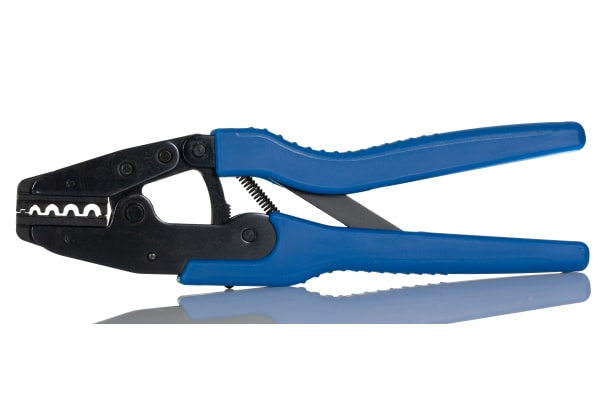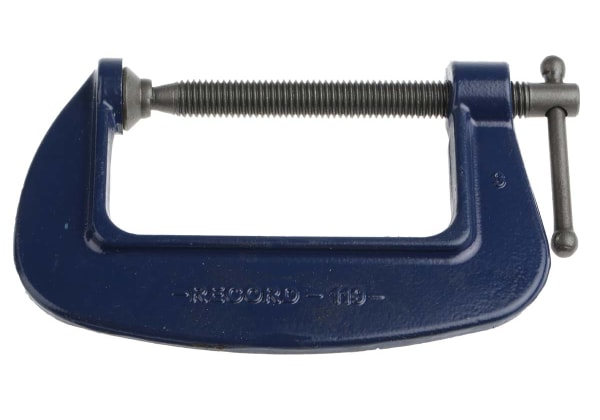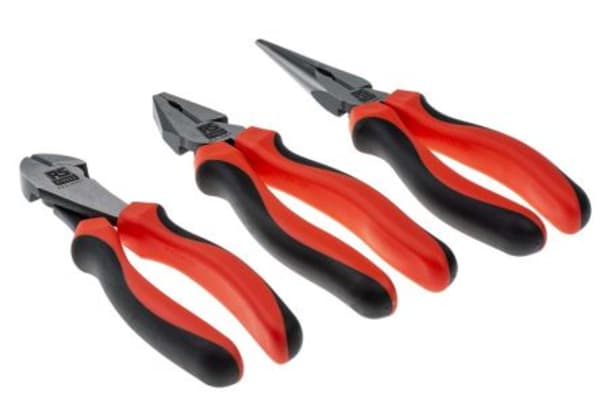- Published 28 Mar 2025
- Last Modified 28 Mar 2025
- 6 min
What is a Pipe Bender?
Pipe benders shape metal and plastic pipes into precise angles for various applications. Find out how they work and the different types and sizes in this guide.
Reviewed by Stephen Bettles (Technical Support Engineer, January 2025)
A pipe bender is a crucial tool in various industries, used to bend pipes into specific angles and shapes. Essential for professionals such as plumbers, electricians, HVAC technicians, and metalworkers, a pipe bender enables the precise manipulation of pipes without compromising their structural integrity or causing damage.
Understanding the different types of pipe benders available is key to selecting the right tool for your specific needs. Pipe benders can be manual, requiring physical effort, or they can be powered by hydraulic or electric systems, offering greater precision and efficiency.
These specialist tools come in varying sizes to handle different pipe diameters. Choosing the correct size ensures accurate bending without distortion or kinking, making the selection process crucial for effective results.
Understanding Pipe Benders
Whether you're a professional tradesperson or a DIY enthusiast, understanding how a pipe bender operates is fundamental for successful pipe bending projects. A pipe bender allows you to shape pipes to meet specific requirements, making it indispensable for tasks involving pipe manipulation.
How to Use a Pipe Bender
Using a pipe bender might seem daunting initially, but with the right knowledge and technique, it becomes a straightforward task. The first step in learning how to use a pipe bender is to select the appropriate pipe bender for the job. Options include manual benders, hydraulic benders, and electric benders. Consider the pipe's size and material, along with the desired bend angle, to choose the right tool.
After selecting the right bender, prepare the pipe by measuring and marking the bend location accurately. Remove any debris or burrs from the pipe ends to ensure a smooth bending process.
Position the pipe securely in the bender, aligning it with the bending mark. Apply gradual pressure using the bender handle or lever, depending on the type of bender. Take your time to ensure a smooth and controlled bending process. For additional support, a bending spring can be used to prevent the pipe from collapsing or deforming.
How does a Pipe Bender Work?
So, how does a pipe bender work? Pipe benders are equipped with a bending shoe or form that holds the pipe while applying force to create the desired bend. Manual benders rely on human power, whereas hydraulic and electric benders use hydraulic or electric motors. The bending shoe gradually applies pressure, bending the pipe without kinking or breaking.
Safety is paramount when working with pipe benders. Always wear appropriate personal protective equipment (PPE), such as gloves and safety glasses, and ensure the work area is free from obstacles or hazards.
Various types of pipe benders are available to suit different applications, each offering unique features and benefits, below are the most common:
Manual Pipe Bender
Manual pipe benders are simple, easy-to-use tools that let you bend metal or plastic pipes without needing electricity or heavy machinery. They’re a go-to choice for plumbers, electricians, and HVAC technicians who need a quick, portable solution for shaping pipes on-site. Most manual benders work with a lever or ratcheting mechanism, allowing you to apply steady pressure for a smooth, accurate bend. While they’re affordable and convenient, they do require some physical effort and a bit of skill to avoid kinks or uneven bends, but they’re perfect for smaller jobs.
Hydraulic Pipe Bender
Hydraulic pipe benders use hydraulic pressure to bend pipes with precision and ease, making them ideal for heavy-duty tasks involving thicker or larger pipes. These pipe benders offer increased bending capacity and require less manual effort, allowing for smooth, controlled bends without compromising the strength of the material. Commonly used in industrial and construction applications, hydraulic pipe benders are essential for bending pipes made of materials like steel, stainless steel, and copper, ensuring high accuracy and reducing operator fatigue.
Electric Pipe Bender
Electric pipe benders use an electric motor to provide consistent, powerful bending force, making them ideal for repetitive and precision bending tasks. The advantage of these pipe benders is that it exerts minimal physical strain on the operator, reducing manual effort and quick, smooth operation. Electric pipe benders are great options for bending a variety of materials, like steel and aluminium and for that reason are commonly used in industrial and commercial settings.
Pipe Bender Sizes
Choosing the right size of pipe bender is crucial for achieving precise and accurate bends. Pipe benders are designed to handle pipes of various diameters, and selecting the appropriate size ensures optimal performance. One of the primary factors to consider when selecting a pipe bender is the diameter of the pipe you will be working with. Pipe benders come in different sizes to accommodate different pipe diameters, and the size of the bender corresponds to the maximum diameter it can effectively bend.
For smaller pipes, typically those with a diameter ranging from 6mm to 15mm, a compact pipe bender is an excellent choice. These hand-held tools are lightweight, easy to transport, and highly portable, making them ideal for use in confined spaces or for on-site installations where manoeuvrability is key. Compact pipe benders are designed for simple, precise bends and are especially suitable for tasks in residential or light commercial settings, such as plumbing or electrical conduit work.
When working with medium-sized pipes, usually ranging from 15mm to 32mm in diameter, a medium-sized pipe bender becomes necessary. These tools offer a greater bending capacity, providing more control and precision when forming bends in thicker materials. They are typically more robust than compact models, often featuring mechanical or hydraulic assistance, and are ideal for medium-duty tasks in industries such as HVAC or construction where higher bending forces are required.
For larger pipes exceeding 32mm in diameter, a heavy-duty pipe bender is essential. These machines are designed to handle the high levels of bending force required for larger, thicker pipes commonly found in industrial applications, such as those used in plumbing systems, power plants, or heavy machinery. Heavy-duty benders often feature hydraulic or electric-powered systems that allow for efficient and precise bends without compromising the integrity of the pipe. These tools are built to withstand demanding work environments and are often found in fabrication shops or large construction sites where high-volume, complex bending is required.
To ensure optimal performance and accurate bends, it is essential to choose a pipe bender that matches the size of the pipes you will be working with. At RS Components, we offer a wide range of pipe benders in various sizes, allowing you to find the perfect tool for your specific needs.



